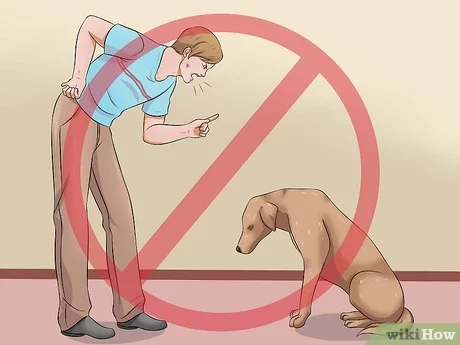Why Is My Dog Running In Circles
Why Is My Dog Running in Circles? Understanding Canine Behavior and Health
Dogs are amazing creatures that bring joy, love, and companionship to millions of people around the world. However, sometimes dogs do things that seem strange or even worrisome to their owners. One common behavior that many dog owners wonder about is why their dog is running in circles. While there can be various reasons for this behavior, some of which may require veterinary attention or training, most cases are harmless and natural expressions of a dog’s instincts and emotions. In this article, we will explore the possible causes and meanings of dogs running in circles, as well as some tips on how to deal with this behavior if it becomes problematic.
Section 1: What Does It Mean When a Dog Runs in Circles?
Subsection 1.1: Instincts
Dogs are descended from wolves, which were pack animals that had to hunt and defend their territory in the wild. One way that wolves communicated with each other was through body language, including circling around each other or prey. This behavior served several purposes, such as showing dominance or submission, confusing or distracting the target, or coordinating the attack. While domesticated dogs have evolved to live with humans and have lost some of their wild traits, they still retain many of their ancestral instincts, including the urge to circle around objects or people.
Subsection 1.2: Emotions
Dogs are also emotional beings that experience a wide range of feelings such as happiness, fear, excitement, boredom, or anxiety. Some dogs may run in circles as a way to express these emotions or release pent-up energy. For example, a happy dog may run around its owner in circles as a form of greeting or playfulness; a fearful dog may circle around itself or an object as a way to cope with stress or avoid perceived threats; an excited dog may circle around its food bowl or toy as a way to increase anticipation or arousal; a bored dog may circle around the same spot as a way to entertain itself or seek attention; an anxious dog may circle around its owner or inanimate objects as a way to self-soothe or alleviate stress.
Section 2: When Is Running in Circles Normal and When Is It Not?
Subsection 2.1: Normal Behavior
In most cases, running in circles is a normal and harmless behavior that dogs do for various reasons. As long as the dog is not hurting itself, others, or property, and is not showing signs of distress or illness, there is no need to worry about this behavior. However, if the dog is excessively circling around people or objects, to the point of being disruptive or obsessive, it may indicate an underlying issue that needs to be addressed.
Subsection 2.2: Abnormal Behavior
Sometimes, running in circles can be a symptom of a health problem, such as neurological disorders, ear infections, or vision impairments. If the dog seems disoriented, dizzy, uncoordinated, or has other unusual symptoms along with circling behavior, it should be examined by a veterinarian to rule out any serious conditions. Additionally, if the dog is circling around its own tail or hind legs excessively, it may have an injury or irritation that requires medical attention. Finally, if the dog is circling around people aggressively or unpredictably, it may be exhibiting signs of aggression or territoriality that require behavioral training from a professional.
Section 3: How Can You Help Your Dog Stop Circling?
Subsection 3.1: Environmental Enrichment
One way to reduce excessive circling behavior in dogs is to provide them with more mental and physical stimulation in their environment. This can include toys that challenge their cognitive skills and instincts (such as puzzles or chew toys), regular exercise that tires them out and improves their mood, playtime with other dogs or humans that socializes them and reduces boredom, and changes in their living space that adds variety and novelty (such as rearranging furniture or introducing new smells and sounds).
Subsection 3.2: Training and Positive Reinforcement
Another way to modify circling behavior in dogs is through training that rewards good behavior and discourages bad behavior. This can include commands that redirect the dog’s attention (such as “sit” or “stay”), positive reinforcement techniques that praise and treat the dog for good behavior (such as clicker training or offering a favorite food), and consistency in enforcing rules and boundaries. However, it is important to note that punishment or physical force should not be used to correct circling behavior, as this can lead to fear, anxiety, aggression, or other negative consequences.
Section 4: Conclusion
In conclusion, running in circles is a common behavior in dogs that can have various causes and meanings depending on the context. While most cases are normal and harmless expressions of canine instincts and emotions, some cases may require veterinary attention or behavioral modification. As a responsible dog owner, it is important to observe your dog’s behavior carefully, provide them with appropriate care and training, and seek professional help when necessary. Remember that dogs are unique individuals with their own personalities and quirks, so do not hesitate to embrace their weirdness and enjoy the bond you share with them!



